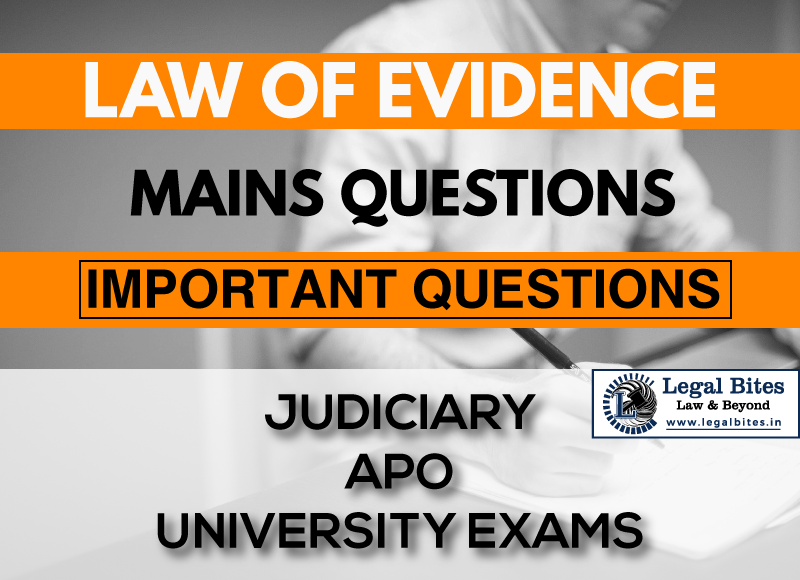Question: A is tried for the murder of B. Evidence is offered at the trial to show that A absconded after receiving a letter, warning him that the inquiry for the murder was being made. Discuss the relevancy of aforesaid facts. [HR.J.S. 1995] Find the answer to the mains question only on Legal Bites. [A is tried for the murder of B. Evidence is offered at the trial to show that A absconded after receiving a letter, warning him that the inquiry for the murder was being made. Discuss...
Question: A is tried for the murder of B. Evidence is offered at the trial to show that A absconded after receiving a letter, warning him that the inquiry for the murder was being made. Discuss the relevancy of aforesaid facts. [HR.J.S. 1995]
Find the answer to the mains question only on Legal Bites. [A is tried for the murder of B. Evidence is offered at the trial to show that A absconded after receiving a letter, warning him that the inquiry for the murder was being made. Discuss the relevancy of aforesaid facts.]
Answer
Section 8 of the Indian Evidence Act deals with when motive, preparation, and previous or subsequent conduct of the parties become relevant. The question in the present case is, whether A committed a crime.
The conduct of an accused in absconding when the police get suspicious of his complicity in the offence of murder is relevant under this section and might well be indicative to some extent of a guilty mind. But this is not the only conclusion to which it must lead the court. Such is the instinct of self-preservation in an average human being that even innocent persons may when suspected of grave crimes, be tempted to evade arrest.
Explaining the meaning of the term “absconder”, the Supreme Court in the case of Kartarey v. UP, AIR 1976 SC 76 said-
To be an absconder, in the eye of the law, it is not necessary that a person should have run away from his home, it is sufficient if he hides himself to evade the process of law even if the hiding place is in his own home.
The facts of the present case are borrowed from illustration (h) to section 8. Thus, the fact that A absconded after receiving a letter warning him that inquiry was being made for the criminal, and the contents of the letter, are relevant.
Important Mains Questions Series for Judiciary, APO & University Exams
- Law of Evidence Mains Questions Series Part-I
- Law of Evidence Mains Questions Series Part-II
- Law of Evidence Mains Questions Series Part-III
- Law of Evidence Mains Questions Series Part-IV
- Law of Evidence Mains Questions Series Part-V
- Law of Evidence Mains Questions Series Part-VI
- Law of Evidence Mains Questions Series Part-VII
- Law of Evidence Mains Questions Series Part-VIII
- Law of Evidence Mains Questions Series Part-IX
- Law of Evidence Mains Questions Series Part-X

